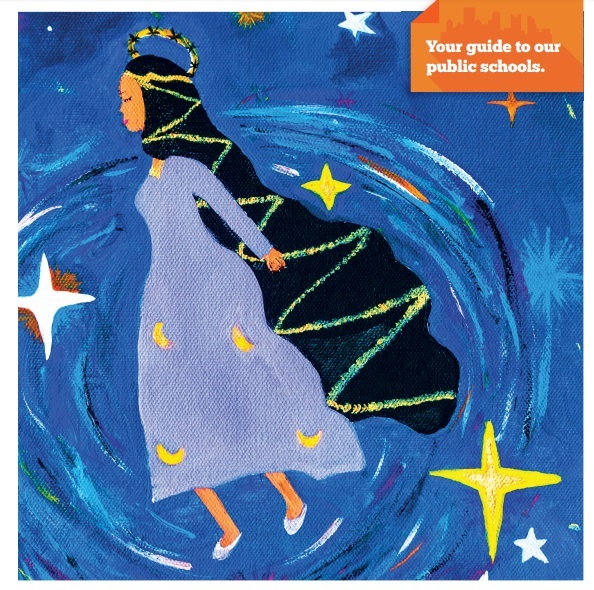
What’s the state of Pittsburgh Public Schools? James Fogarty discusses the latest progress report
A+ Schools’ annual Report to the Community on Public School Progress in Pittsburgh offers a mixed bag of results.
For example:
- More third graders are reading at grade level than three years ago, but too few kids are doing math at grade level.
- Graduation rates are improving, but absenteeism remains a problem.
- Student suspensions are down, but a disproportionate number of black students are among those being suspended.
- Enrollment increased by 234 students for the 2017-18 school year, but enrollment is still down by 862 kids from 2014-15.
These key points can be found in the 2018 report, culled from information gathered from local schools and the Pennsylvania Department of Education. The report is designed to paint an accurate and unbiased picture of local educational trends and issues.
“We’re trying to find trends and pull together high-level talking points,” says James Fogarty, executive director of A+ Schools, an advocate for the educational interests of children in Pittsburgh.
He encourages community members to act on report details to advocate for change, work as tutors or mentors, or to volunteer at local schools.
“We recognize that our vision of a school system where 100 percent of students graduate college and career-ready, and at least 80 percent go on to complete college or trade school, is still not a reality,” says Fogarty. “We also know that achieving this vision is not something that we at A+ Schools can do alone.”
Fogarty discussed some of the findings from the report with Kidsburgh.
What does last year’s enrollment increase signify?
It’s positive. It signals that either more kids are being born and families are staying in Pittsburgh, or there’s greater confidence in some schools or some combination of both.
The survey indicates 60 percent of teachers attained a “Distinguished” level based on observation of teaching practices, student perceptions, student learning and growth data, and/or student learning objectives set by teachers and principals. Is this level satisfactory?
I think the whole point of the evaluations here was not so much that you would separate people out, but to be able to differentiate where people’s strengths and weaknesses are, and then be able to help them improve.
To the extent that the current system does that, we think that you keep using those portions of it. To the extent that it doesn’t, if we’re just saying you’re distinguished but there’s not a lot of feedback for the teacher, not “here’s where you can grow and here are the resources.”
I think we really have to look into that and say there’s a disconnect between where our teachers’ teaching core is and where are students in terms of the outcomes that we see. We need to think about it less in terms of punitive evaluative terms.
If you are doing all you can do to teach kids, which I believe the vast majority of teachers are – and plenty of evaluations reflect that most teachers are meeting that bar – and everyone’s working hard, it’s just, are you working well? That’s the part we’d like to figure out more. What can we do to get teachers the support they need to improve the outcomes that we see.
Chronic absenteeism (defined as missing 10-percent or more of school days, or 2 days per month) is a problem in almost every high school. Chronic absenteeism was reported at 16 percent of students by the US Department of Education for the 2015-16 school year, but at Carrrick that figure was 72 percent, and 50 percent at Westinghouse.
How should absenteeism be addressed?
One of the things we’re trying to highlight for families is that you may not think you’re chronically absent because it’s an excused absence or a doctor’s appointment. Many of our kids are working at night to help support their families, so they think, `I’ll take a day off at school tomorrow because I had a late night at work.’ And that adds up over time.
This is one issue that our entire community needs to be engaged in. And I’m really proud of the work that Shauna Kennedy at the Be There campaign is doing to try to make attendance a focal point, not just for school communities, but for entire communities.
It is troubling. And we know from students that it’s multi-faceted. One of the things we’re looking at is what are the community factors that impact it.
Black students make up 53 percent of the district but account for 76 percent of all students suspended at least once. Are you troubled by these statistics?
The district has reduced overall suspensions by about 35 percent over the last three years, a very positive trend. But the disproportionality hasn’t moved at all. You’ve got a problem where you’re reducing suspensions, and African-American students are being suspended over five times the rate of white students.
It sends a message. It reflects both institutional implicit and unintentional biases that we all have and a need for larger conversations around those biases, around teenagers, and what kind of training supports we need to ensure kids are staying in school.
To help parents and other community members understand the findings, A+ Schools is offering tailored presentations to schools and groups interested in learning more about the report and how to use it. To arrange a presentation at your school, organization or church, click here to find the form.